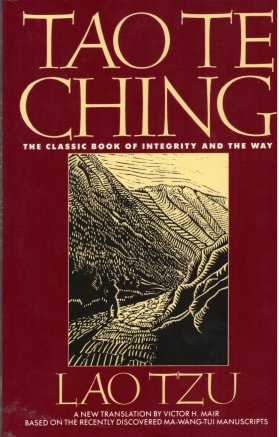
Tao Te Ching: The Classic Book of Integrity and the Way

Most of the books on the Tao Te Ching have the Tao portion first, and the Te portion last. This book reverses the order. This book has a preface, the Tao Te Ching, notes and commentary, an afterword and an appendix.
The preface has some very interesting information in it, including the following:
1. Some manuscripts had been found with where hundreds of years older than any other version found.
2. He has used those manuscripts and says that the translations from them make his book significantly different from other versions.
3. He discusses the title of the book and says it really should be Sayings of the Old Masters.
Verse 45 (in his numbering system; verse 1 in most others)
The ways that can be waled are not the eternal Way;
The names that can be named are not the eternal name.
The nameless is the origin of the myriad creatures;
The named is the mother of the myriad creatures.
Therefore,
Always be without desire
in order to observe its wondrous subtleties;
Always have desire
so that you may observe its manifestations.
Both of these derive from the same source;
They have different names but the same designation.
Mystery of mysteries,
The gate of all wonders!
Verse 7 (in other books this is verse 44)
Name or person,
which is nearer?
Person or property,
which is dearer?
Gain or loss,
which is drearier?
Many loves entail great costs,
Many riches entail heavy losses.
Know contentment and you shall not be disgraced.
Know satisfaction and you shall not be imperiled;
then you will long endure.
As you can see the translations are somewhat different than other versions.
The afterward is another section that contains a lot of information. I consider the preface and the afterwards the two strongest parts of this work, actually.
p. 119 : He talks about just how little is known about Lao Tzu and about what seems to be that he did not write the book himself but only perhaps part of it and other Taoists wrote down material over the following centuries and all this was put together into one book. He adds more about this on page 120. He points out specific evidence that indicates that the book was a collection of old sayings.
Then later in this section he examines the meanings of a number of words connected to the book.
Back to start of Spirituality section
Back to start of Taoism section
Back to main Index page
|